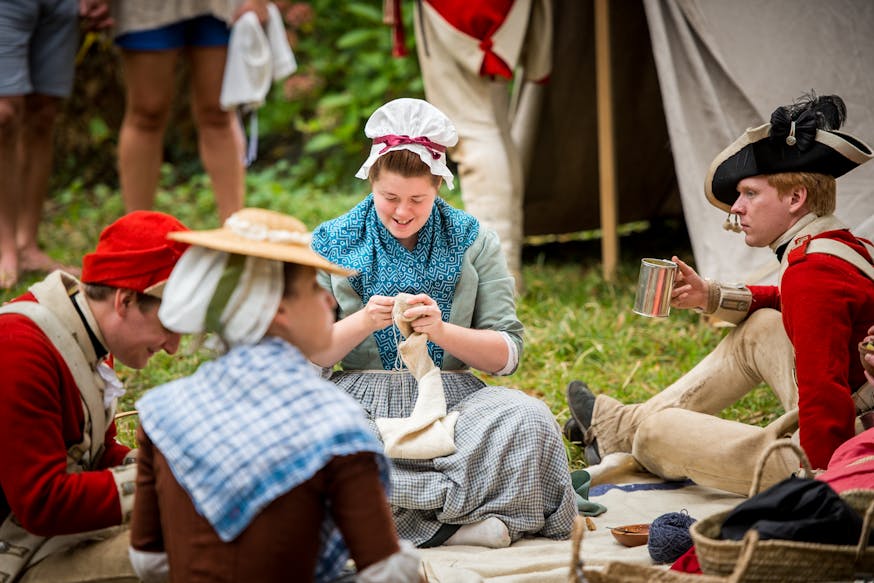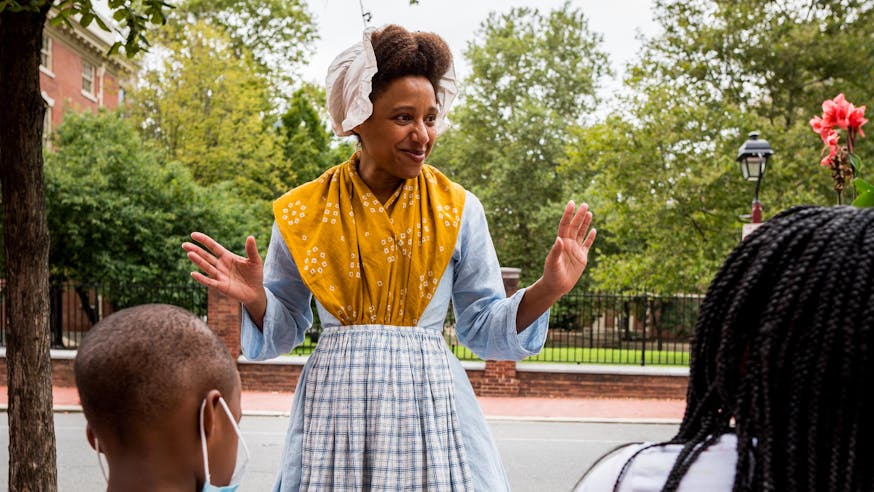Read the Revolution
The American Manufactory
May 8, 2024
Purchase the book from Princeton University Press.
At the end of the Museum’s core galleries, there is an array of portraits of members of the Revolutionary generation taken during the early- and mid-1800s. We frequently talk about the ongoing Revolution, which did not end in 1783 with the war but continued as Americans worked to establish their country, their livelihoods, and their symbols. Laura Rigal’s The American Manufactory: Art, Labor, and the World of Things in the Early Republic explores part of the ongoing Revolution – the development and evolution of how Americans thought about production after the Revolutionary War and into the 1800s. She “traces the uneven emergence of labor and class in the early industrial Northeast by considering episodes of cultural production and display…”
In chapters that bring together art, poetry, artisans, craftsmen, and various trades, Rigal relies on evidence that is related to Philadelphia, including the city’s “Grand Federal Procession of 1788” and Charles Willson Peale’s mastodon excavation. Read the excerpts below for more on these stories.
Excerpts
In the spring and summer of 1788, a series of Federal Processions were held in North American seaports from Charleston and Baltimore to New York, Boston, and Portsmouth, New Hampshire. As the Constitution of 1787 was ratified in state after state, triumphant federalists in each capital city celebrated with toasts, dinners, rounds of gunfire, and a street parade. By the early summer of 1788, as it became clear that the Constitution would be ratified by ten of the thirteen states, Philadelphia began to plan a national celebration. Drawing on diverse European and Euro-American processional traditions, including the recent state processions, Philadelphia federalists put the city’s craftsmen, or mechanical artists, at the center of a parade that performed the making of the new federal state by analogizing republican nation building to the myriad productive processes of American manufacturing. More than forty-five crafts or trades marched in the city’s “Grand” Federal Procession…
[…]
In its linking of nation building with commodity production, Philadelphia’s civic celebration was descended, in part, from the European ceremonial tradition of “the Triumph,” and, more immediately, from the organizational forms, emblematic devices, and mechanical wonders of British craft processions and Lord Mayor’s Day celebrations. As a late-eighteenth-century festival, however, it was also inflected with the principles and practices of republican festivity of the European Enlightenment more generally. In this it both differed from and expanded upon military or monarchical triumphs and craft ceremonial. Within this Enlightenment tradition of republican festivity, for example, the Grand Federal Procession aspired to a feeling state that Montesquieu, among others, had classified as peculiar to republics: namely, civic love, or the virtuous love of the state for itself that arises when a republic sees itself assembled.
[…]
Sign Up
Get biweekly Read the Revolution featured excerpts right to your inbox!
In its representational/productive ambition, the Federal Procession also distinguished itself from Revolutionary-era street genres of colonial protest and crowd action. The organizers of the Philadelphia procession believed that the size and orderliness of their federal spectacle supplanted the local ad hoc activism that had characterized urban political expression in the 1760s and 70s. Street parades, marches, rituals, and spontaneous crowd actions had been staples of political practice during the Revolution. As in Europe, this tradition of extralegal street activity had not infrequently resulted in riots and assaults on buildings or persons.
[…]
In the summer of 1801, four months after Thomas Jefferson’s inauguration, Charles Willson Peale (1741-1827) led a scientific expedition to the marshy farmland of southeastern New York. Some bones of the mammoth, or the “enormous nondescript of North America,” had been unearthed by farmers digging marl, a claylike peat, for manure. Equipped and funded by President Jefferson and the American Philosophical Society, Peale traveled by carriage from Philadelphia and by boat from New York City to Shawangunk, a farming community near West Point. There he contrived a huge wooden pump to drain the excavation site and, hiring local men as wage laborers, exhumed the fragmentary remains of three mastodons. Enough bones were excavated to reconstruct nearly two complete skeletons. With the help of his son Rembrandt Peale and the Philadelphia wood sculptor William Rush, Peale manufactured the parts that were missing from one skeleton on the pattern of their counterparts in the others, carving them from wood or fashioning them from papier-mâché….
American mammoth bones had circulated in Europe and North America since the days of Cotton Mather. A hundred years before Peale’s expedition, Mather identified huge leg bones and teeth unearthed near Albany, New York, as the remains of the Nephilim, the half-human, half-divine giants destroyed by God in the biblical flood….
….Peale’s expedition to Shawagunk proved the mammoth to be a mastodon, an enormous, extinct American quadruped…but the skeleton continued to be referred to as a mammoth, even by Peale, and, with the recreation of a whole mastodon from mammoth parts in the first year of Jefferson’s presidency, the word “mammoth” entered the political lexicon of the time, in association with the social and economic policies of Jefferson and his supporters, the Jeffersonian-Republicans.
At the end of the American Revolution, Thomas Jefferson envisioned an extended republic of husbandmen that would reach one day to the Pacific Ocean. His model of an agrarian state, cultivating and consuming its collective independence while exporting its surplus, was designed to retard the “natural progress of the arts” toward commercial luxury on the one hand and the growth of an urban working class on the other. Jefferson’s political economy was opposed to Britain’s example of empire through commerce and manufacturing, yet it was nevertheless itself a vehicle of empire. In theory and practice, an agrarian republic was necessarily expansionist.
Laura Rigal, The American Manufactory: Art, Labor, and the World of Things in the Early Republic (Princeton, New Jersey: Princeton University Press, 1998), pages 21, 23, 24 and 91-92.
Tags
Learn More

Makers of Revolutionary Philadelphia Living History Day 2024
May 18, 2024
Living History Demonstrations

